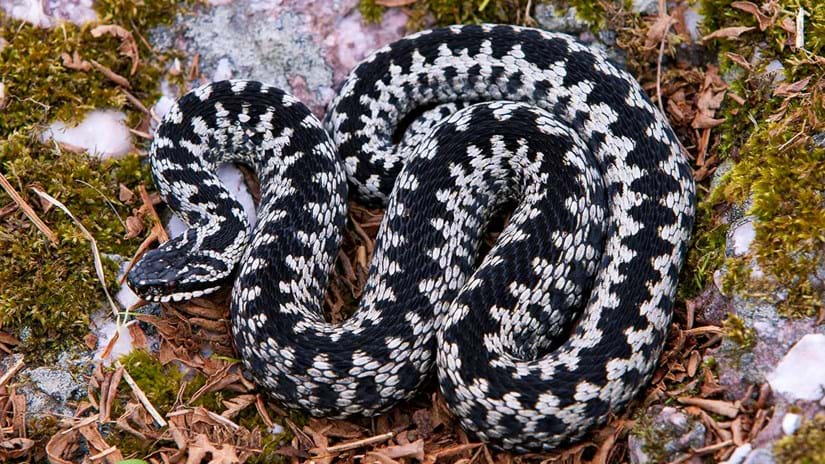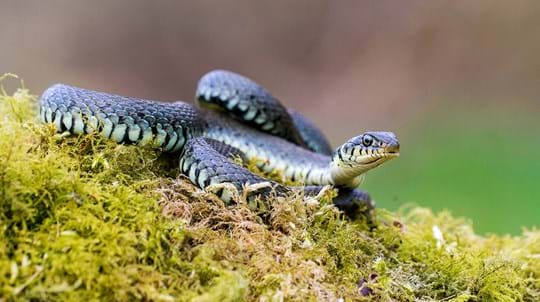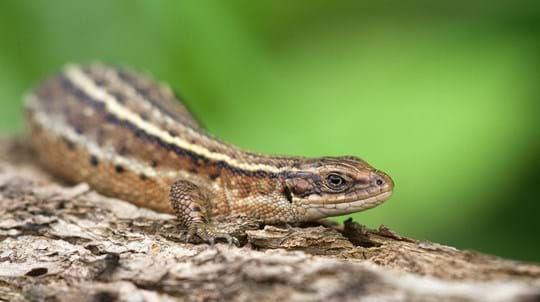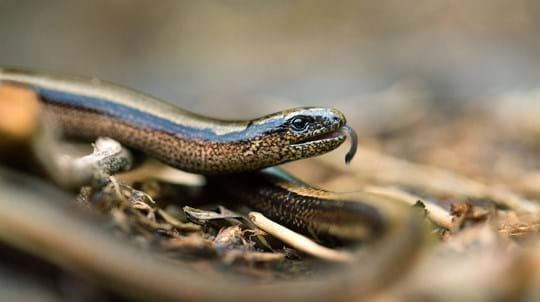
Credit: Colin Varndell / Alamy Stock Photo
What do adders eat?
Adders feed primarily on small mammals, such as voles and mice, and lizards. They will also eat frogs, newts and small birds and their chicks. They are active during the day and use their venomous bite to subdue their prey.












